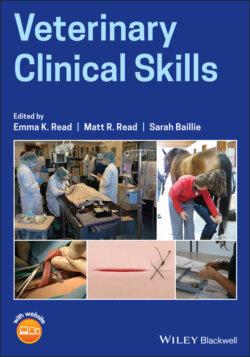Читать книгу Veterinary Clinical Skills - Группа авторов - Страница 20
Entrustable Professional Activities (EPAs), Nested EPAs, and Clinical Skills
ОглавлениеAlthough a focus on competencies has assisted backward curricular design, some critics of competency‐based education believe that competency frameworks are too theoretical to be useful for teaching and assessment in daily clinical practice. In response to these concerns, EPAs were developed to work in tandem with competencies to produce a more “holistic” basis for curricular design (Prideaux, 2016).
An EPA is a core task which a learner can be entrusted to perform independently at a certain stage of their training when they seem ready. The EPA should be carried out within a given time frame, be observable and measurable, and allow for focused entrustment decisions (ten Cate et al. 2015), or where multiple methods exist for entrustment decisions (Duijn et al., 2019b) include the use of entrustment scales, mini‐clinical evaluation exercise (mini‐CEX), and direct observation of procedural skills (DOPS). In this way, EPAs operationalize observable competencies in a practical setting, because several competencies within multiple domains must be integrated simultaneously to execute the EPA (Englander et al., 2017).
Since EPAs are the routine activities that learners should be expected to perform in a clinical or workplace‐based setting without direct supervision at graduation, it could be argued that these should drive curricular design for a clinical skills curriculum in the same way competencies drive curricular design and content for the entire veterinary curriculum. Recently, a number of sets of EPAs have been developed in veterinary education that focus on either core activities of graduates (Molgaard et al., 2019), those that focus on farm animals (Duijn et al., 2019a), and those that focus on surgical skills for companion animal practice (Favier et al., 2020). Additional sets of EPAs have been created for postgraduate students, such as the ones developed by Graves et al. (2020) for large animal interns.
Theoretically, an EPA can be small or simple (e.g. measuring and reporting blood pressure) or large and more complex (e.g. performing anesthesia). However, similar to the concern regarding long lists of required clinical skills, it does not make sense to develop hundreds of small EPAs resulting in long and unmanageable skills lists with no possible endpoint application. To this end, it has been suggested that smaller EPAs could be identified, which can be subsequently clustered into a large (or endpoint) EPA, where these have been called nested EPAs or sub‐EPAs (ten Cate et al., 2015; Duijn et al., 2019b). In order to recognize that there are small, simple tasks or skills that need to first be mastered so that a student can be competent at the more complex EPAs, Warm et al. (2014) called these smaller units “observable practice activities” (which we call “clinical skills”), and these, in turn, can be clustered or nested into an EPA. In this way, clinical skills followed by nested EPAs can be taught and assessed in earlier years of the curriculum, allowing logical progression of skills development, as well as appropriate preparation for students to execute the larger, more complex core EPAs during their final clinical year (ten Cate, 2018). A diagrammatic representation of these relationships is outlined in Figure 2.2.
Lastly, regardless of whether competency frameworks or EPAs in tandem with competencies are used in curricular design, it is important that the required competencies (rather than individual faculty expectations) drive curricular content and the choice of logical priorities for inclusion.
